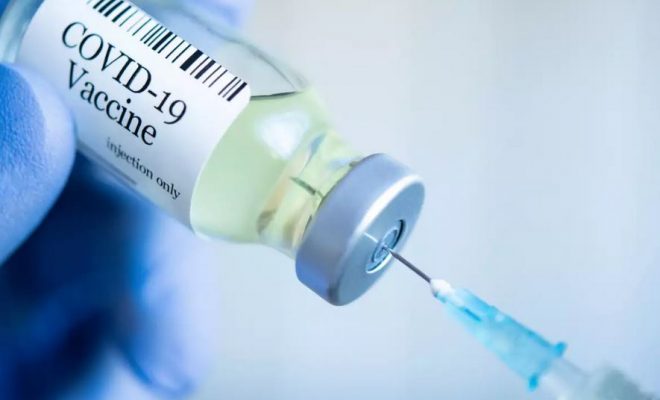Tendon Pain Linked to Type 2 Diabetes

Tendinopathyrefers to pain that occurs in and around your tendons (your tendons connectyour muscles to your bones). Typically, tendinopathy is the result of overuseor repetitive movements, but in people with type 2 diabetes chronicallyelevated blood sugar levels may increase the risk.
Arecent systematic review and meta-analysis published in the British Journal ofSports Medicine shed light on this association, providing “strong evidence thatdiabetes is associated with higher risk of tendinopathy.”
Morethan 30 studies were analyzed, which showed not only is tendinopathy more prevalentin people with diabetes, butthe opposite also holds true in that diabetes is more prevalent in people withtendinopathy.1
Type 2 Diabetes May Triple Your Risk of Tendon Pain
Thestudy revealed that people with type 2 diabetes are more than three times aslikely to have tendon pain compared to those without diabetes. Further, peoplewith tendinopathy are 30 percent more likely to have diabetes than thosewithout tendon pain.
Thereare multiple reasons why this association deserves increased attention, not theleast of which is the fact that tendinopathy can be quite painful and mayinterfere with a person’s quality of life.
Beyondthis, there is evidence that Achilles tendinopathy in diabetics may lead toincreased forefoot pressure and the development of plantar forefoot ulcers,which may cause deep infection and lower extremity amputation.2
However,one of the greatest risks of tendinopathy to people with diabetes is that apainful tendon may stop you from being physically active, which is one of themost important and effective treatments for diabetes.
Exercise Is Crucial if You Have Diabetes
Ifyou’ve been diagnosed with type 2 diabetes, your fate is not “sealed.” You cando far more than simply try to control the condition; you can likely cure yourself of this disease. A keyaspect of that cure is exercise.
One of theamazing things about exercise is that it exerts its effects very quickly. Thereare long-term benefits, too, but you’ll also get acute, nearly instantaneous benefits — youdon’t have to exercise for a year or six months to experience benefits.
Researchpublished in Medicine & Science in Sports & Exercise even found that one single session ofmoderate exercise can improve the way your body regulates glucose.
It may also reducethe spikes in blood sugar that occurafter a meal (elevations in these spikes, known as postprandial glucose, orPPG, are associated with type 2 diabetes, heart disease and death).3 Further,according to research published in Advances in Physiology Education:4
“Exercise is a well-established tool to prevent and combattype 2 diabetes. Exercise improves whole body metabolic health in people withtype 2 diabetes, and adaptations to skeletal muscle are essential for thisimprovement.
An acute bout of exercise increases skeletal muscle glucoseuptake, while chronic exercise training improves mitochondrial function,increases mitochondrial biogenesis, and increases the expression of glucosetransporter proteins and numerous metabolic genes.”
If You’re Diabetic, High-Intensity Workouts Are Especially Important
Mostpeople can benefit from addinghigh-intensity interval training (HIIT) to their exercise routine, but thisis especially important if you have diabetes. HIIT involvesshort periods of maximum exertion followed by a short period of rest.
In onestudy, older overweight type 2 diabetics improved their glucose regulation injust six HIIT sessions done over the course of two weeks.5
They alsoincreased their mitochondrial capacity, which means their bodies became moreeffective at producing energy. Their total time investment was just 60 minutesper week.
The key tothe benefit is intensity. In this study, participants performed 10 bouts of60-second cycling at 90 percent of their maximum heart rate, interspersed with60 seconds of rest.
Another HIITapproach is the Peak Fitness method, which consists of30 seconds of maximum effort followed by 90 seconds of recuperation, for atotal of eight repetitions.
Super Slow strengthtraining is another option that allows you to turn strength training into ahigh-intensity workout.
Exercise Lowers the Risk of the Leading Cause of Death for Diabetics
Engagingin a six-month moderate-intensity exercise program led to significant healthimprovements among people with diabetes.6 Specifically, they haddecreases in fat in the abdomen, liver and around the heart, all of which areassociated with an increased risk of heart disease.
Heartdisease is the No. 1 cause of death among people with type 2 diabetes.It’s estimated that at least 65 percent of those with diabetes die from someform of heart disease or stroke.7
Whilethe exercise program didn’t lead to direct changes in heart function, thereductions in dangerous visceral fat around key organs — as well as reductionsin pericardial fat, which is the second layer of fat around the heart — willundoubtedly improve heart health among this at-risk population.
Alsonoteworthy about the study was the relatively small amount of exercise neededto prompt such beneficial changes. The participants exercised between 3.5 andsix hours a week (and ended the program with a 12-day trekking expedition),which is a reasonable goal for most people.
Further,the benefits were gained from exercise alone; no other lifestyle or dietarychanges were made, which shows just how powerful staying active can be inimproving your health — even if you’ve already been diagnosed with apotentially chronic disease like type 2 diabetes.
Tendinopathy Versus Tendinitis
Youcertainly do not want tendon pain to get in the way of your regular workouts,so if this applies to you, you’ll want to see a physical therapist who isexperienced with treating tendinopathy.
Unfortunately,most tendon injures are automatically treated as inflammatory issues andprescribed non-steroidal anti-inflammatory drugs(NSAIDs),often in conjunction with corticosteroid injections. This will not address theunderlying cause of your tendon pain and may expose you to unnecessary sideeffects.
Alarge part of the problem is that tendinopathy is often used interchangeablywith tendinitis, but the two are not the same. The latter, tendinitis, involvesinflammation of the tendon while tendinopathy involves degeneration ofthe tendon’s collagen in response to chronic overuse.8
Thetreatment methods for tendinitis and tendinopathy are markedly different, andtreating the latter with NSAIDs may actually make the condition worse.
Whileaddressing inflammation may be useful for tendinitis, treatment fortendinopathy needs to break the cycle of injury and optimize collagenproduction so the tendon can regain normal strength. Anarticle published in the International Journal of Therapeutic Massage & Bodyworkexplained the differences well:9
“Think tendinitis and you think pain and burning in theaffected area, decreased strength and flexibility, and pain caused by everydayactivities. As it turns out, tendinosis is far more often responsible for thesesymptoms than tendinitis.
Tendinitis is theinflammation of the tendon and results from micro-tears that happen when themusculotendinous unit is acutely overloaded with a tensile force that is tooheavy and/or too sudden. Tendinitis is still avery common diagnosis, though research increasingly documents that what isthought to be tendinitis is usually tendinosis.
Tendinosis is adegeneration of the tendon’s collagen in response to chronic overuse; whenoveruse is continued without giving the tendon time to heal and rest, such aswith repetitive strain injury, tendinosis results. … The mostprominent treatment goal for tendinitis is to reduce inflammation, a conditionthat isn’t present in tendinosis.
In fact, some treatments to reduce inflammation arecontraindicated with tendinosis. Ibuprofen, a nonsteroidal anti-inflammatory,is associated with inhibited collagen repair. Corticosteroid injectionsinhibited collagen repair in one study, and were found to be a predictor oflater tendon tears.”
Treatment Options for Tendinopathy
Ifyou have tendinopathy, a physical therapist or other specialist can help you torecover, although the healing process may take months. It’s important to find ahealth care provider who is experienced with tendinopathy (as opposed totendinitis). Treatment and self-care recommendations may include:10
| Rest, especially atthe start of treatment. A break from repetitive work tasks is important. | Adjust ergonomics andbiomechanics. Small changes, such as pressing keyboard keys as lightly as possibleand keeping your wrists in a neutral position while typing, can make a bigdifference. |
| Use appropriatesupport, including bracing or taping if necessary, to reduce stress on thetendon. | Stretch and keepmoving. This will help increase circulation, supporting the healing process,and elongate the muscle-tendon unit, which may help reduce degeneration. |
| Apply ice. This may helpresolve tendinopathy for reasons that aren’t yet fully understood. |
Eccentric strengthening, which is “lengthening amuscle while it is loaded and contracting,” helps stimulate collagen productionand improves tendon strength. “… [L]engthening one’s bicep while holding a dumb-bell in one’shand would stimulate eccentric contraction,” according to the International Journalof Therapeutic Massage and Bodywork.11 A physical therapistcan help you to maximize the benefit of eccentric strengthening, stretching andother exercises for tendinopathy. |
| Massage. Deep-frictionmassage may help generate new collagen. Myofascial and trigger-point therapymay also be useful. | Nutrition. Vitamin C, manganeseand zinc are important for the synthesis of collagen production, while vitaminB6 and vitamin E are important for tendon health. |
When the above changes are applied correctly, it’s possibleto eliminate tendon pain, according to the International Journal of Therapeutic Massage & Bodywork.12
“Whilethe cellular damage is unlikely to be reversed completely, these treatments andself-care recommendations can increase the strength of the tendon by stoppingthe cycle of injury, introducing healthy collagen into the area, addressingunhealthy vascular changes, and decreasing the over-abundance of groundsubstance.
Propertreatment of tendinosis should eliminate or significantly decrease pain,increase range of motion, increase strength, and return the patient topain-free, normal daily activities.”
What Else Can Help You Overcome or Prevent Type 2 Diabetes?
Type 2 diabetes involves loss of insulin and leptinsensitivity, which is easily preventable, and nearly 100 percent reversiblewithout drugs, by addressing your diet and other lifestyle habits, such as exercise, sleep, and intermittent fasting. Isuggest taking a lifestyle inventory to see where you might have room forimprovement and implementing the steps below.
Also, makesure to monitor your fasting insulin level. This is every bit as important asmonitoring your fasting blood sugar. You’ll want your fasting insulin level tobe between 2 and 4. The higher your level, the greater your insulin resistanceand the more aggressive you need to be in your treatment plan, especially whenit comes to altering your diet.
- Swap out processed foods, all forms of sugar — particularly fructose — as well as all grains, for whole, fresh food. A primary reason for the failure of conventional diabetes treatment over the last 50 years has to do with seriously flawed dietary recommendations.
- Low-to-moderateamount of high-quality protein.Substantial amounts of protein can be found in meat, fish, eggs, dairyproducts, legumes, and nuts. When selecting animal-based protein, be sureto opt for organically raised, grass-fed or pastured meats, eggs, anddairy, to avoid potential health complications caused by geneticallyengineered animal feed and pesticides.
- Asmuch high-quality healthy fat as you want (saturated and monounsaturated). For optimal health, most people needupwards of 50 to 85 percent of theirdaily calories in the form of healthy fats. Good sources include coconutand coconut oil, avocados, butter, nuts, and animal fats.
- Asmany non-starchy vegetables as you want
- Exercise regularly and intensely. Studies have shown that exercise, even without weight loss, increases insulin sensitivity.14 High-intensity interval training (HIIT), which is a central component of my Peak Fitness program, has been shown to improve insulin sensitivity by as much as 24 percent in just four weeks.
- Improve your omega-3 to omega-6 ratio. Today’s Western diet has far too many processed and damaged omega-6 fats, and has far too little omega-3 fats. The main sources of omega-6 fats are corn, soy, canola, safflower, peanut, and sunflower oil (the first two of which are typically genetically engineered as well, which further complicates matters). Our bodies evolved for an optimal 1:1 ratio of omega-6 to omega-3.
- Maintain optimal vitamin D levels year-round. Evidence strongly supports the notion that vitamin D is highly beneficial for type 2 diabetes. The ideal way to optimize your vitamin D level is by getting regular sun exposure or by using a high-quality tanning bed.
- Get adequate high-quality sleep every night. Insufficient sleep appears to raise stress and blood sugar, encouraging insulin and leptin resistance and weight gain.
- Maintain a healthy body weight. If you incorporate the diet and lifestyle changes suggested above you will greatly improve your insulin and leptin sensitivity, and a healthy body weight will follow in time. Determining your ideal body weight depends on a variety of factors, including frame size, age, general activity level, and genetics. As a general guideline, you might find a hip-to-waist size index chart helpful.
- Incorporate intermittent fasting. If you have carefully followed the diet and exercise guidelines and still aren’t making sufficient progress with your weight or overall health, I strongly recommend incorporating intermittent fasting. This effectively mimics the eating habits of our ancestors, who did not have access to grocery stores or food around the clock.
- Optimize your gut health. Your gut is a living ecosystem, full of both good bacteria and bad. Multiple studies have shown that obese people have different intestinal bacteria than lean people. The healthier your microflora, the stronger your immune system will be and the better your body will function overall. Fortunately, optimizing your gut flora is relatively easy.
- Consume adequate amounts of magnesium. Magnesium plays a key role in preventing insulin dysregulation and type 2 diabetes — yet80 percent of Americans are likely magnesium deficient. One study found thosewith the highest magnesium intake reduced their risk of metabolic problems by71 percent.16
Fructose,grains, and other sugar-forming starchy carbohydrates are largely responsiblefor your body’s adverse insulin reactions, and all sugars and grains — even”healthy” organic whole grains — need to be drastically reduced.
Ifyou’re insulin/leptin resistant, have diabetes, high blood pressure, heartdisease, or are overweight, you’d be wise to limit your total fructose intaketo 15 grams per day until your insulin/leptin resistance has resolved. For allothers, I recommend limiting your daily fructose consumption to 25 grams orless to maintain optimal health. The easiest way to accomplish this is byswapping processed foods for whole, ideally organic foods.
Thismeans cooking from scratch with fresh ingredients. Processed foods are the mainsource of all the primary culprits, includinghigh fructose corn syrup and other sugars, processed grains, trans fats, artificialsweeteners, and other synthetic additives that may aggravate metabolicdysfunction. Besides fructose, synthetic trans fat increases your risk fordiabetes by interfering with your insulin receptors.13
Sinceyou’re cutting out a lot of energy (carbs) from your diet when you reducesugars and grains, you need to replace them with something. The idealreplacement is a combination of:
MostAmericans eat far too much protein, so be mindful of the amount. I believe itis the rare person who really needs more than one-half gram of protein perpound of lean body mass. Those that are aggressively exercising or competingand pregnant women should have about 25 percent more, but most people rarely needmore than 40 to 70 grams of protein a day.
Remember, fat is high in calorieswhile being small in terms of volume. So when you look at your plate, the largestportion would be vegetables.
However, our ratio has deterioratedto between 20:1 and 50:1 in favor of omega-6. This lopsided ratio has seriouslyadverse health consequences. Toremedy this, reduce your consumption of vegetable oils (this means not cookingwith them, and avoiding processed foods), and increase your intake of animal-based omega-3, such as krill oil.
Vegetable-basedomega-3 is also found in flaxseed oil and walnut oil, and it’s good to includethese in your diet as well. Just know they cannot take the place of animal-based omega-3s.
As a last resort, consider oralsupplementation with regularvitamin D monitoring to confirm that you are takingenough vitamin D to get your blood levels into the therapeutic range of 50 to 70ng/ml. Also, please note that if you take supplemental vitamin D, you create anincreased demand for vitaminK2.
In one 10-year-long study of 70,000diabetes-free women, researchers found that women who slept less than fivehours or more than nine hours each night were 34 percent more likely to developdiabetes symptoms than women who slept seven to eight hours each night.15 If you are having problems with your sleep, try the suggestions in my article “33Secrets to a Good Night’s Sleep.”
This is far better than BMI forevaluating whether or not you may have a weight problem, as BMI fails to factorin both how muscular you are, and your intra-abdominal fat mass (the dangerousvisceral fat that accumulates around your inner organs), which is a potentindicator of leptin sensitivity and associated health problems.
They would cycle through periods offeast and famine, and modern research shows this cycling produces a number ofbiochemical benefits, including improved insulin/leptin sensitivity, loweredtriglycerides and other biomarkers for health, and weight loss.
Keepup your intermittentfasting schedule until your insulin/leptin resistance improves (or yourweight, blood pressure, cholesterol ratios, or diabetes normalizes). Afterthat, you only need to do it “as needed” to maintain your healthystate.
You can reseed your body with goodbacteria by regularly eating fermented foods (like natto, raw organic cheese,miso, and cultured vegetables).
The best source of magnesium iswhole, organic foods, especially dark green leafy vegetables; other goodsources include seaweed, dried pumpkin seeds, unsweetened cocoa, flaxseed,almond butter and whey, but it can be difficult to get enough from diet alone.
Of the many forms of magnesiumsupplements available today, a newer form called magnesium threonate showsparticular promise due to its ability to penetrate cell membranes.








